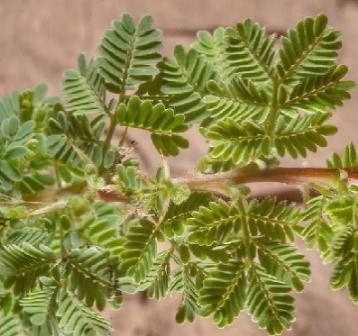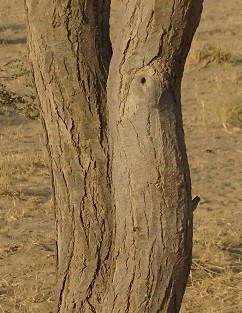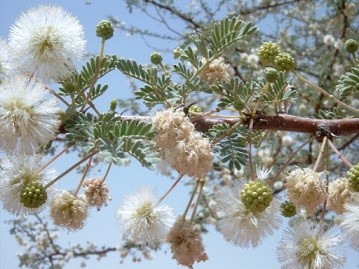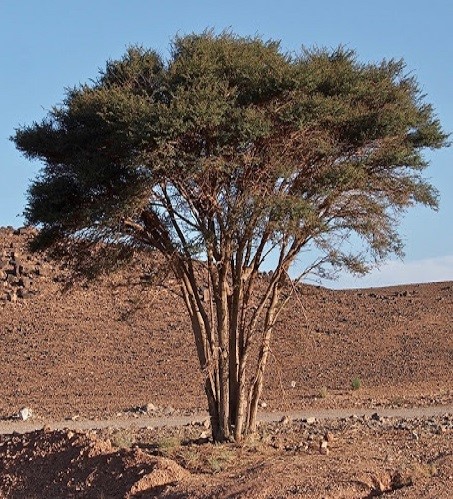Trees
Acacia tortilis (Forsk.) Hayne
Acacia tortilis (Forsk.) Hayne
Description :
A fast growing small tree 4 to 15 m tall. The crown is often flat, and
umbrella like supported by several stems. Foliage is feathery-like and the
leaves are compound. Leaves are small 1.25 to 3.5 cm. It is easily identified
by its two kinds of thorns: the first type is long straight and white, and the
second type is small, brownish and hooked. Deep tap root. The fragrant flowers
are white and appear singly or in clusters in the spring. The pods are twisted,
yellowish brown and mature in early summer. It can be reproduced both from seed
and by vegetative means. It is best reproduced by seed and planted seedlings.
Pretreatment of seed by nicking the seed coat, by an overnight soak in water,
or a soak in sulfuric acid will increase germination. It is relatively fast
growing. Yields of 2 to 4 m3/ha/yr, depending on the site, have been
recorded. A 12 year old plantation, in India, produced 54 tons of fuel wood
from one ha. Strong coppiced, heavy, dense and dry red colored heartwood has a
calorific value of 44000 kcal/kg. Very strong, resilient having coarse and
spiral grains.
Distribution :
This
tree is native to Africa. It has been introduced in arid and semi-arid areas of
Pakistan. It has done well in the Thal desert of the Punjab when it has been
planted on sand dunes with hand watering the tree is seeding now. Seeds could
be collected for raising nurseries. An intolerant, drought resistant tree that
grows on a variety of very harsh, lowland sites that have good drainage. It
favors alkali soils and will tolerate salinity. It requires a precipitation
zone of 100 to 1000 mm/yr. It prefers an arid to semi-arid, hot, climate with a
temperature range of 3 to 45°C. It can tolerate periods of drought of 8 to 10
months. It is relatively free from insect and disease problems. However, its
seed may be attacked by insects.
Uses :
This
tree is adapted to a variety of arid sites and soils. It is best suited to well
drained, alkali soils. It coppices readily but can create problems by sending
roots into farmers’ fields. It is a good nitrogen fixer and could be used for
erosion control on very harsh sites. With care it could be a useful farm
forestry tree. Young plants need protection from grazing and frost. Also used
as fodder, fuel, gum, honey, land stabilization, poles, and agricultural
implements.



